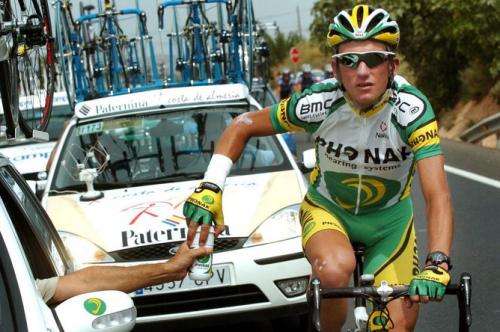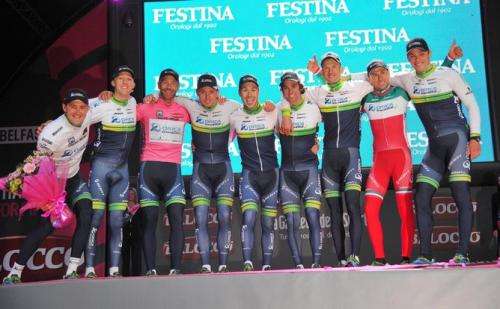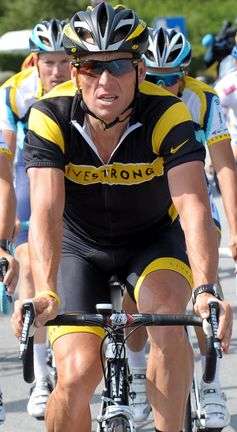If cheating is 'normal' in cycling, how can we build integrity?

"Integrity" is currently the buzzword around Australian sport policy-making.
An integrity in sport forum, co-convened by the Sport Australia Hall of Fame (SOHAF) and Victoria University in Melbourne this week, gathered Australia's sporting leaders from all levels and codes to (in the words of SAHOF chairman John Bertrand) "face the issues, understand the threats and provide guidance and a roadmap".
Prompted by recent high profile competition breaches, and supported by a newly expanded National Integrity in Sport Unit, cycling is among many Australian sports now focusing on ethics and integrity.
Cycling integrity
Cycling Australia (CA) established an Integrity Panel in 2013 after a government appointed review of its governance. CA's Integrity Panel members have been appointed, but it is still unclear how they will deal with ethics and integrity matters in cycling.
To be fair, CA is still finalising major governance reforms – a new board starts in July and will elect a new CEO. But a significant challenge is already waiting for CA's new leaders – and it will require them to be proactive.
The 2012 Vance review of the Orica-GreenEdge team confirmed concerns still exist in the sport about doping at the sub-elite level. And the Wood review of CA warned
it cannot be said with any degree of certainty that the sport of cycling is, or will remain, drug free or that new substances or methods will not emerge that, for a time, will be undetectable.
The integrity challenge of doping in cycling is not going away. One hopes CA's new leadership will break the tradition of denial in Australia about cycling integrity issues such as this. Past official responses to doping by Australian cyclists have been disappointing at best.
Cheating in cycling
Cheating and other forms of rule breaking have always existed in competitive cycling.
Cheating was a feature of the Tour de France from the earliest days – mechanical sabotage, nails on the road, supporters attacking race leaders, short cuts, car and train rides, and drugs and doping for pain relief and enhanced performance.
Australian cycling has had its fair share of transgressions on the world stage, and at home. At least 16 Australian cyclists have tested positive or admitted doping since the 1960s, and there is little doubt many others have gone undetected.

Doping was an issue in Australian cycling long before drug testing started. And some of Australia's biggest cycling races have been fixed.
These days, riders and support staff on the world professional tour are routinely fined for breaking a range of UCI race rules – such as drafting or holding on to vehicles or "sticky" bottles, team mechanics leaning out of car windows to repair bikes on the go, dangerous riding, and discarding rubbish outside of designated clean-up zones.
Other forms of cheating in cycling – such as "the chop", buying or selling races, and other forms of collusion and race fixing are easily found on the discussion and comment pages of popular cycling blogs.
Cheating even exists in the amateur and recreational ranks of cycling – for example, the new phenomenon of "Strava doping",and the use of prohibited supplements and substances by amateur riders.
As Jeremy Whittle concluded in his book Bad Blood: The secret life of the Tour de France: "There was never a golden age of fair play in cycling's history. Cheating has always been a characteristic of the sport."
Cheating as cycling culture
So how should we understand the place and practice of cheating and other rule breaking in competitive cycling?
An important Australian study in 2009-10 by Martin Hardie and colleagues involved 22 in-depth interviews with current and retired professional cyclists and other officials. The study revealed how the social nature of the professional cycling peloton works to preserve certain forms of cheating that the group regards as acceptable, if not necessary.
One study participant explained:
There are a lot of occasions which have been fixed and the public has no idea, there are some occasions which have not and the public thinks for sure it is fixed, professional sport has got very good at making it look right.
International research by Verner Moller, John Hoberman, Lentillon-Kaestner and Carstairs and Ophir Sefiha has reached similar conclusions about the acceptance of doping by some competitive cyclists as "necessary medicine" to keep their contracts, and maintain their bodies at the level required.
To date, much of the research on doping in sport has framed doping as a "performance enhancement" issue, with an assumed relationship between athlete use of legal supplements and medicines and propensity to engage in illegal doping. Indeed, the Wood CA review expressed concern that supplement use "can promote a culture or mindset that will lead an individual to adopt other short cuts including engaging in prohibited forms of doping."
The evidence of a wider culture of cheating in cycling suggests an alternative framing is also possible.
We should also consider that prevailing attitudes in cycling around less serious forms of cheating or rule breaking in competition may later lead to more severe integrity breaches such as doping – that is, cycling culture is driving the phenomenon more so than individual decisions.
This is potentially a process where all forms of cheating – from the most minor to the most severe – are rationalised, accepted and ultimately normalised in competitive cycling culture through the progression of social groups (teams, clubs, friends) along the rule-breaking continuum.
Consider the rationalisations offered by the most famous of recent confessed dopers in professional cycling: Tyler Hamilton, Lance Armstrong and Jan Ullrich. The doping practices of these ex-riders didn't equate to cheating in their view, because everyone was doing it. They considered it normal.
Enhancing integrity in cycling

Public discussions about sport integrity, such as the Melbourne forum this week, should prompt us to look closely at the cultures and practices (both positive and negative, official and unofficial), that currently exist within Australian sport.
The current national policy focus on sport integrity presents an opportunity for the governing bodies of cycling to be open and honest about the place and practice of rule breaking, and other forms of cheating within the culture of competitive cycling.
As Martin Hardie and colleagues have argued, "the communal or social nature of the peloton, or of cycling itself, gives rise to both the problem and the possibility of a 'solution' to doping in professional cycling."
We must accept that cheating is part of the culture of competitive cycling, and strive to understand it if we are to have any chance at identifying and promoting the group-level cultural changes needed to enhance the ethics and integrity of this beautiful and inspiring sport.
This story is published courtesy of The Conversation (under Creative Commons-Attribution/No derivatives).
![]()
















